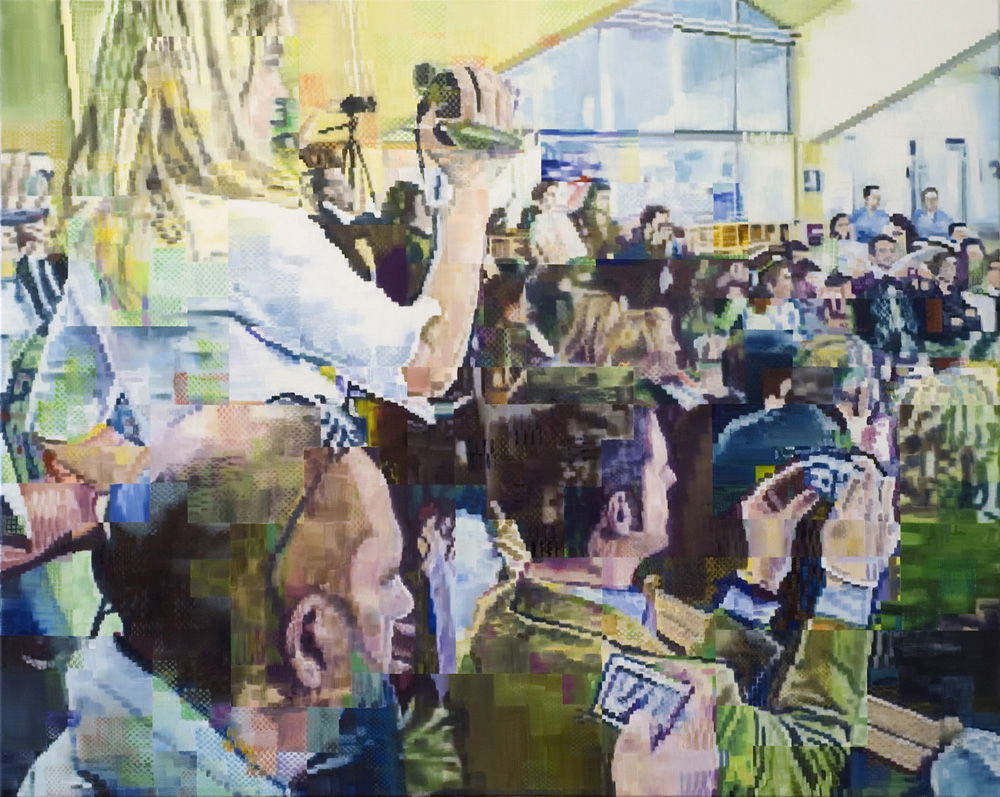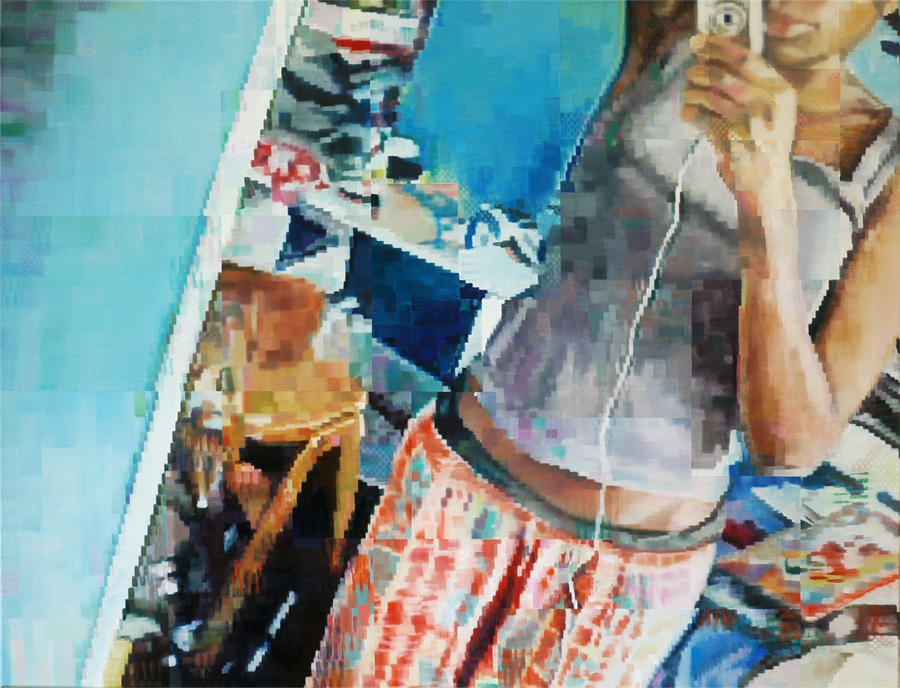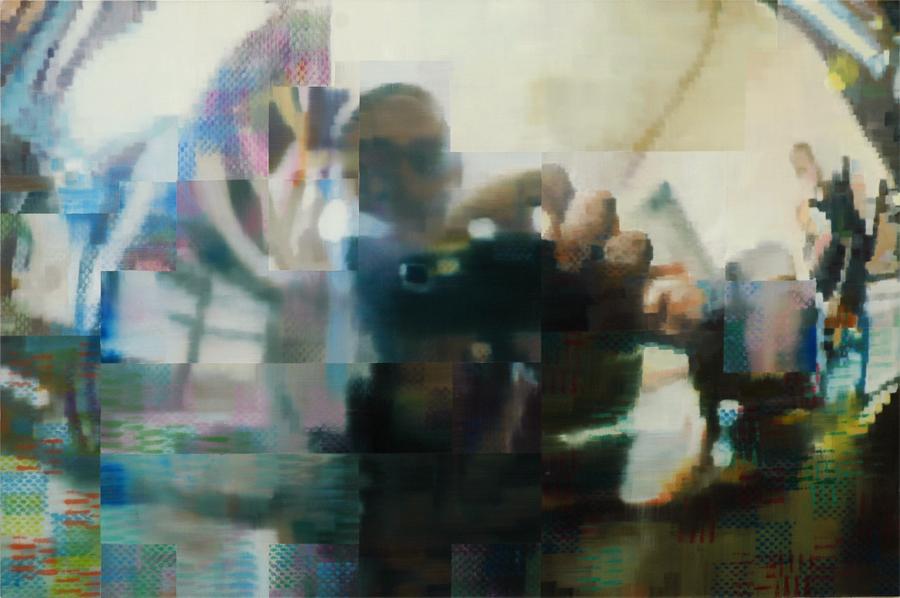
Being Digital by Enda O'Donoghue (2008)
A collection of examples from the Prosthetic Knowledge Tumblr archive featuring artists who have inserted the visual grammar of new media technology into painting.
Enda O’Donoghue

wow, my stomach looks really great! (2010)

The 1604 (2006)

Reflection (2010)
Enda O’Donoghue’s work presents a forensic interest in the medium and process of painting and an ongoing dialogue with the mediation of images through digital technology. Hovering between the realms of abstraction and representation, between the mathematical encoded and the organic, O’Donoghue’s paintings are the result of a process which is highly analytical and methodical and yet inviting of errors, misalignments and glitches. The imagery comes almost exclusively from found photographs sourced from the Internet, where O'Donoghue plays with random throw-away moments of everyday life, merging them together in various interconnected themes. In O’Donoghue’s work, the painterliness of his technique works with the disposable nature of his subjects to make the work sometimes poignant and melancholic, or alternatively brittle and harsh. His work is deeply influenced by our digital high speed reality and he transports these seemingly meaningless sound-bite images from a place of apparent futility to one that questions and searches for meaning through the transformative act of painting.
William Betts

US-54 and Hondo Pass, El Paso, Texas, November 15, 2006, 17:12 (2008)

KLM 777, Schiphol (2010)

Executives (2008)
Houston-based artist with a background as a software executive, William Betts has created various series of works which utilize limited technological resolution recreated with acrylic.
Kon Trubkovich

Untitled (2010)

Good-bye Uncle Rudolph (2010)

Double Entrance / Double Exit (2009)
Russian-born artist paints scenes of distorted videos with oils - from OHWOW:
Kon Trubkovich’s work is concerned with notions of space and memory visualization. His videos, paintings, and works on paper, often deal with the technological transfer of information, and the inherent visual aspects that occur from disruption, interference, and distortion – lines, blips, anomalies. Video transmissions are garbled, and the two-dimensional work derives from equally abstruse digital stills. Paintings and graphite drawings depicting recorded instants, which may contain recognizable elements or be completely abstract, lack identity and are unclear in content. This work refers to the randomness of analog static, but also illustrates the paradox that exists with the value and exercise of capturing a moment.